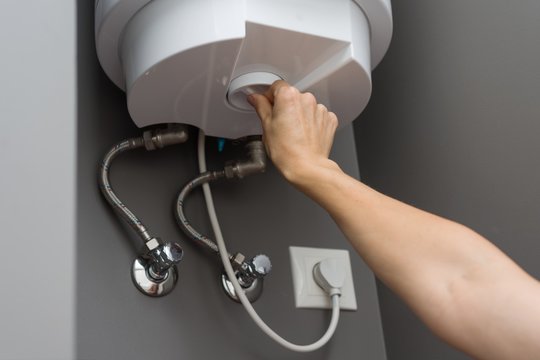Best Practices for Maintaining Your Home's Hot Water SystemSpecialist Guidance for Caring for Your Home's Hot Water System
Best Practices for Maintaining Your Home's Hot Water SystemSpecialist Guidance for Caring for Your Home's Hot Water System
Blog Article
We've stumbled upon this great article about What Kind of Maintenance Do Water Heaters Need? below on the internet and felt it made perfect sense to discuss it with you on my blog.

Hot water is vital for daily convenience, whether it's for a refreshing shower or cleaning meals. To ensure your hot water system runs successfully and lasts much longer, regular upkeep is crucial. This short article supplies functional pointers and understandings on just how to keep your home's hot water system to avoid disturbances and costly fixings.
Intro
Maintaining your home's warm water system may seem overwhelming, but with a few simple actions, you can guarantee it operates efficiently for many years to come. This overview covers whatever from recognizing your warm water system to DIY upkeep tips and recognizing when to call in expert aid.
Significance of Maintaining Your Hot Water System
Routine maintenance not just extends the life expectancy of your hot water system however also guarantees it operates effectively. Neglecting upkeep can lead to reduced performance, greater energy costs, and also premature failing of the system.
Signs Your Hot Water System Demands Maintenance
Recognizing when your hot water system requires interest can prevent major concerns. Look out for indicators such as inconsistent water temperature, odd sounds from the heater, or rusty water.
Comprehending Your Warm Water System
Before diving right into upkeep tasks, it's valuable to recognize the basic elements of your warm water system. Generally, this consists of the hot water heater itself, pipes, anode rods, and temperature level controls.
Monthly Maintenance Tasks
Routine month-to-month checks can help catch small concerns before they intensify.
Purging the Hot Water Heater
Flushing your water heater gets rid of debris buildup, enhancing effectiveness and lengthening its life.
Monitoring and Replacing Anode Rods
Anode rods stop deterioration inside the container. Inspecting and replacing them when worn out is important.
Examining and Changing Temperature Level Setups
Adjusting the temperature settings guarantees optimal performance and safety.
DIY Tips for Maintenance
You can perform several maintenance tasks on your own to keep your warm water system in leading condition.
Checking for Leaks
On a regular basis evaluate pipelines and links for leakages, as these can cause water damages and greater bills.
Examining Pressure Relief Valves
Testing the pressure relief valve ensures it functions correctly and prevents too much stress build-up.
Shielding Pipes
Insulating hot water pipes reduces warm loss and can conserve energy.
When to Call an Expert
While DIY maintenance is advantageous, some concerns call for specialist experience.
Facility Concerns Calling For Expert Assistance
Instances consist of significant leakages, electric issues, or if your water heater is consistently underperforming.
Routine Specialist Upkeep Perks
Expert maintenance can include detailed assessments, tune-ups, and ensuring compliance with safety criteria.
Conclusion
Regular upkeep of your home's warm water system is important for efficiency, long life, and price savings. By following these pointers and recognizing when to look for specialist assistance, you can ensure a reliable supply of warm water without unforeseen disruptions.
How to Maintain an Instant Hot Water Heater
Before tinkering with your hot water heater, make sure that it’s not powered on. You also have to turn off the main circuit breaker and shut off the main gas line to prevent accidents. Also turn off the water valves connected to your unit to prevent water from flowing into and out of the appliance. 2. When you’re done, you have to detach the purge valves’ caps. These look like the letter “T” and are situated on either side of the water valves. Doing so will release any pressure that has accumulated inside the valves while at the same time avoid hot water from shooting out and burning your skin. 3. When the purge valves’ caps are removed, you have to connect your hosing lines to the valves. Your unit should have come with three hoses but if it didn’t, you can purchase these things from any hardware or home repair shops. You can also get them from retail stores that sell water heating systems. Read the user’s manual and follow it to complete this task properly. When the hosing lines are connected, open the purge port’s valves. 4. You should never use harsh chemical cleaners or solutions when cleaning your unit. Make use of white vinegar instead. It should be undiluted and you’ll probably use about 2 gallons. 5. Now flush your water heater. This task should probably take about 40 minutes. We can’t give you specific directions for this because the procedure is carried out depending on the type, model and brand of your heater. With that being said, refer to the user’s manual. 6. When you’re done draining the unit, you have to turn off the purge port valves again. Remove the hosing lines that you earlier installed on each of the water valves. Put the valve caps (purge port) back in their respective places and be very careful so as not to damage the rubber discs that are found inside these caps. 7. Now that everything’s back in place, check your user’s manual again to find out how to reactivate your water heating system. 8. Once it is working, turn one of your hot water faucets on just to let air pass through the heater’s water supply pipes. Leave the tap on until water flows smoothly out of it. https://www.orrplumbing.com/blog/2014/september/how-to-maintain-an-instant-hot-water-heater/

We are very drawn to Tips on Maintaining a Water Heater and I'm hoping you appreciated our blog posting. Sharing is caring. You won't know, you may be doing someone a favor. We thank you for your readership.
Get Quote Now Report this page